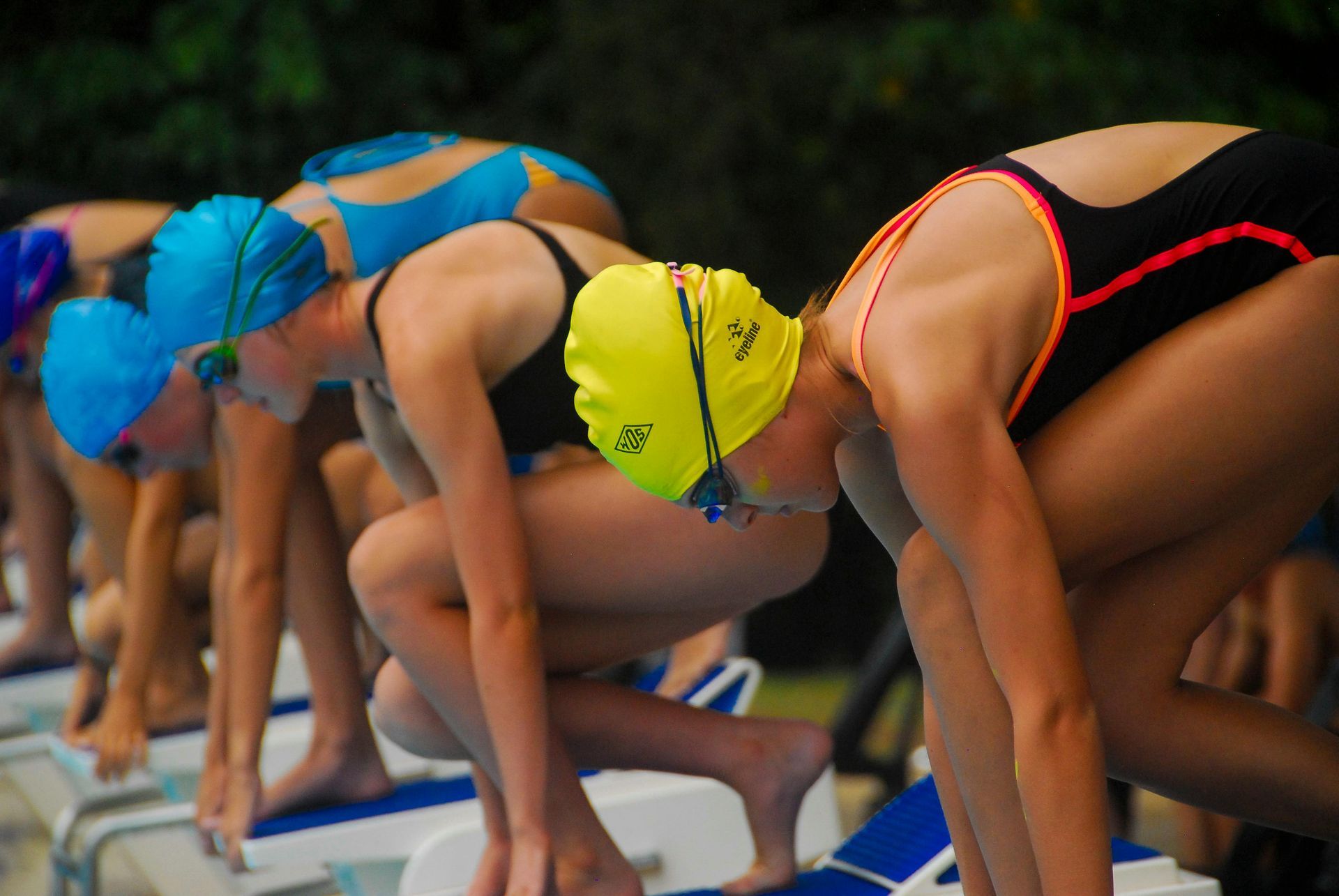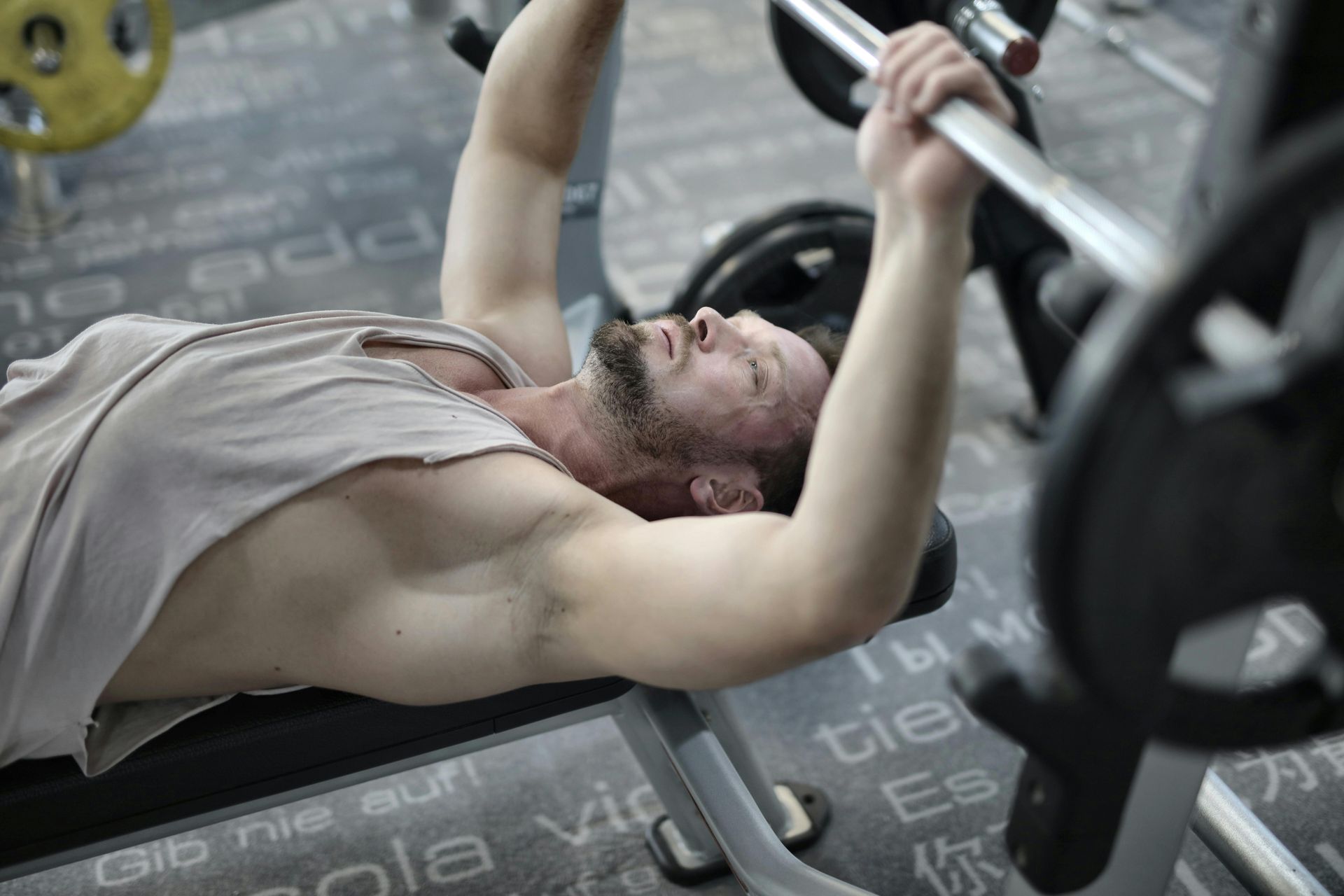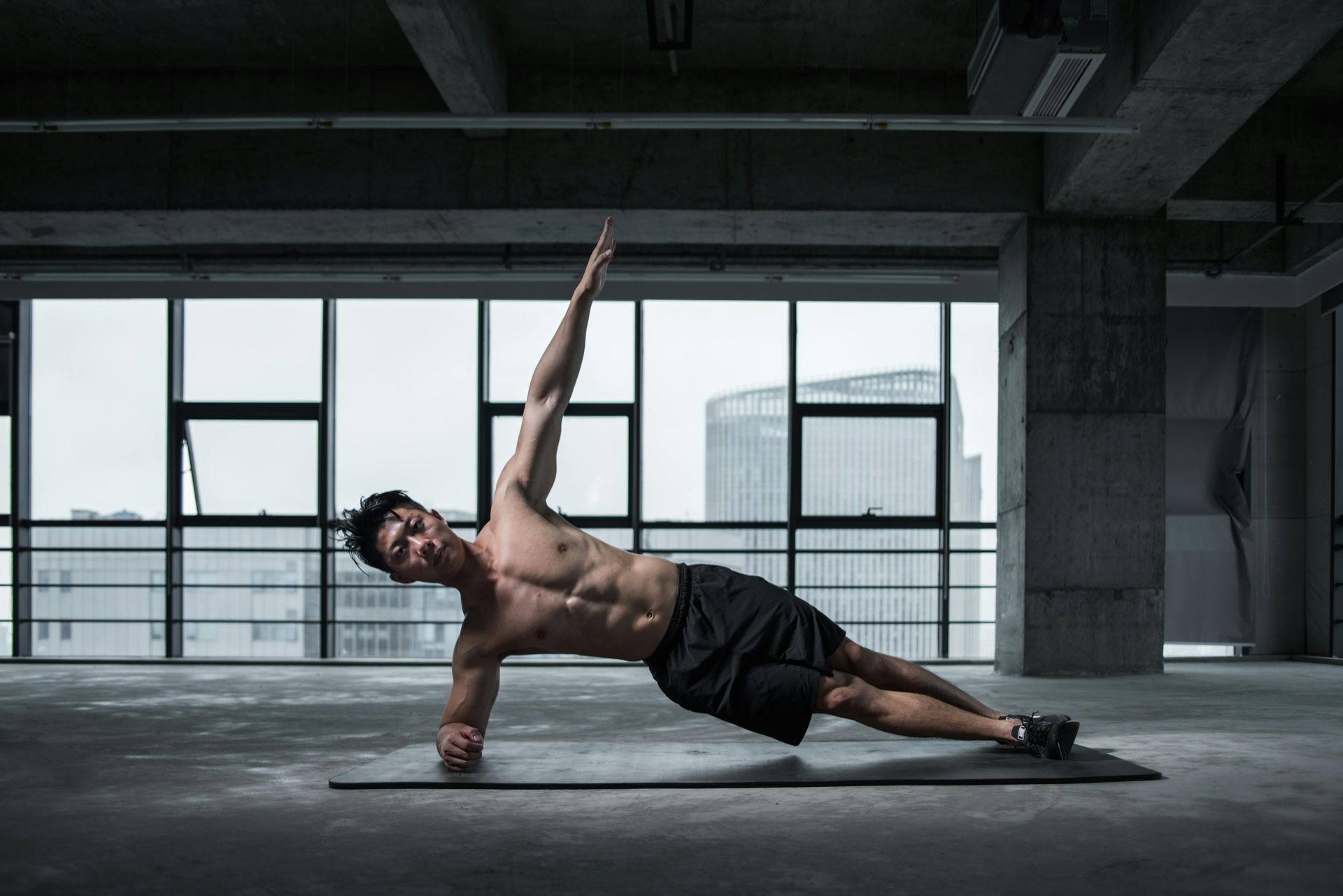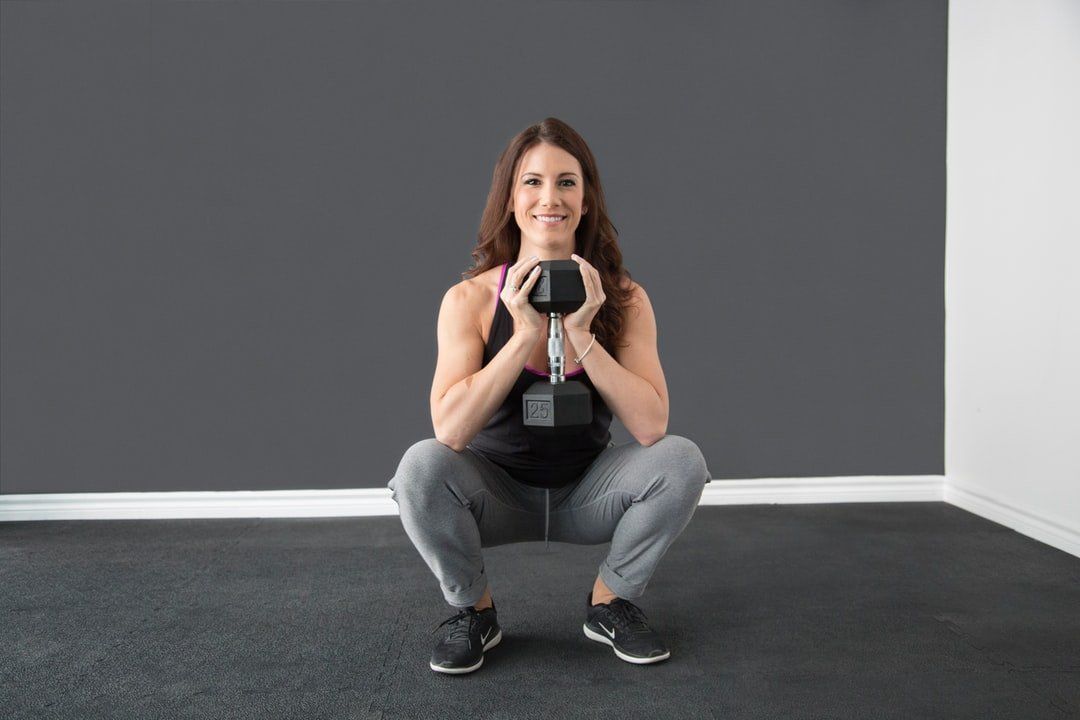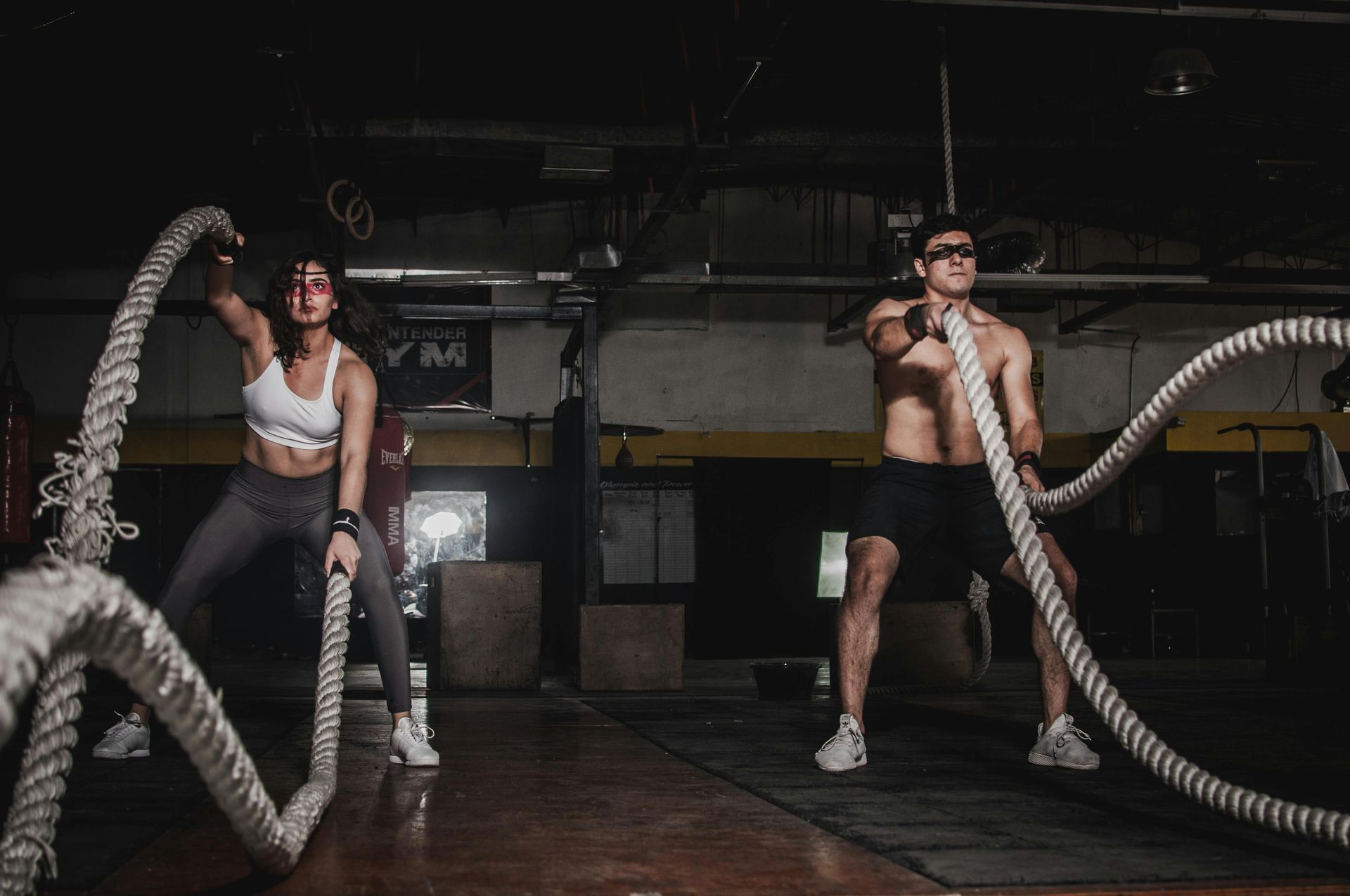What is Holistic Training?
An introduction to Holistic Training

What is holistic training? If you ask my artificially intelligent chatbot, “holistic training focuses on overall well-being, going beyond just physical exercise. It incorporates elements like nutrition, mental well-being, and stress management to create a sustainable and well-rounded approach to health.” Why might this be an effective approach to training?
As we know from the exercise science literature, things like
nutrition,
sleep duration/quality, and
stress management can make significant impacts on one's ability to optimize results and achieve their goals. One factor that doesn't get brought up enough is social support.
A really good example of this is the working mom (or any mom, really) of two or three kids who often finds it hard to make time for herself. It's a lot easier for her to make time if she has a significant other, family, or friends who can help her with the kids so that she can commit time to working out.
Many people cite lack of
time as a reason for not working out. Whether it's work, school, family, or other commitments, life can get really busy! One other thing these things all share in common is that they are
social factors that can either support (or even cue) physical activity or they can be barriers to it. Thus, the social aspect is an important factor in predicting physical activity and promoting optimal results. The key takeaway is it's not just the biological or the psychological that matters!
What does this all look like in practice? Let's say this working mom I previously mentioned is one of my clients. She can work out twice a week, but can only commit to an hour with me and an hour at home. Her goal is to build muscle, particularly in her back, shoulders, and lower body overall. In addition to the nutrition coaching and information about sleep quality and duration, I would design her programming in a way that allows her to get as much volume within that amount of time as possible because when it comes to muscle growth, volume is queen!
My first priority is to help her with exercise selection. I want her to get the most bang for her buck, so I'm going to have her start with several sets per workout doing compound movements such as squats, deadlifts, rows, and shoulder presses. I would also prioritize exercises she prefers for the sake of adherence. So if she likes lunges, she can do lots of lunges! These are also good exercises for her because they can be done with dumbbells or kettlebells, which makes working out at home more feasible. Resistance bands are an option, but they are often easiest when the muscle is in the stretched position. It would be ideal for the lift to be most challenging when the muscle is more
lengthened.
Next is isolation work, or accessory lifts that train muscles in a way consistent with her goals. Examples of this might include lateral raises for her deltoids since she wants to increase muscle mass in her shoulders. I might also have her train closer to
failure on most of her sets because this will help her see more progress, even if I can't get her to do as much volume as I'd like.
The next thing I can do to help her save time is to program supersets.
Supersets have been shown to create an effective stimulus for muscle growth and can help people save a lot of time.
The final variable I would help her control for is her
resting time. For instance, I would program 2 minutes of rest for lower body compounds and 1 minute for lower body isolation work. All upper body lifts would have 1 minute rest periods.
Notice that I've covered my biological, psychological, and social bases. Of course, there may be more things to consider for her and everyone is different. I could have another working mom as a client, but her programming could look very different compared to the first mom.
How I Understand Holistic Training
I like to understand not just the theory and applications behind holistic training, but also the underlying frameworks that can inform both research and practice. There are two influential approaches that I find to be particularly useful: the
biopsychosocial model and
dynamic systems theory. Let's start with the biopsychosocial model.
We've actually gone over some of the basics. It is an approach that takes into account the biological, psychological, and social factors behind physical activity. More technically, it is a model that was developed in contrast to the biomedical model of health and disease because of the latter's limited ability to take into account the psychological and social variables at play in the development and treatment of health conditions (e.g., diabetes). The reason why it has these limitations is because it is grounded in a kind of reductionist physicalism, meaning that one's health is essentially reducible to their biology, which is reducible to physics and chemistry. Stated differently, the so-called “hard sciences" are given priority over the psychological and social sciences.
In contrast, the biopsychosocial model gives priority to none of these perspectives and rejects reductionism. The objects of study for psychology and the social sciences are just as real and consequential as the objects of study for physics, chemistry, and biology. However, if one is suffering from a cardiac arrest, biology is going to be the most useful standpoint from which to approach the patient in the moment of the cardiac arrest. Likewise, treating a personality disorder, while there certainly is a biological dimension, is best approached with psychosocial interventions like dialectical behavioral therapy.
The other approach that I mentioned is dynamic (or dynamical) systems theory (DST). DST is a framework for studying how complex systems change over time. It's often used in fields like physics, biology, and even psychology to analyze the behavior of systems with many interacting parts. It emphasizes how different parts of a system interact to produce its overall behavior. Dynamic systems rely on self-organization, which describes how components of a system come together to produce an emergent, novel form. It does not require a preexisting code or set of instructions because it is spontaneous.
Esther Thelen, a major proponent and popularizer of DST in the developmental sciences emphasizes self-organization as a principle of development, which differs from more traditional views of development as progression through a series of stages along a predetermined pathway.
Thelen theorizes that behaviors such as crawling or walking, for example, emerge from dynamic interactions between different systems such as the nervous system, the muscular system, environment, etc. Small changes within individual components of these dynamic interactions can produce significant changes in the overall system.
In short, Thelen's work on self-organization centers the child as an active constructor in their own development, which is seen as a dynamic and flexible process characterized by constant change and adaptation.
An important feature of DST is non-linear causality. As opposed to traditional understandings of causality as linear or unidirectional, nonlinear causality is bidirectional. Let's use the traditional billiard ball metaphor to gain a more concrete understanding.
Suppose you are playing billiards and ball A collides with ball B. What happens? Some of the energy from ball A transfers to ball B as it makes contact and applies force. This causes ball B to accelerate, or move, as a result. Some would take it as obvious that there is a unidirectional, cause-effect relationship between an antecedent (the movement of ball A) and consequent (the acceleration of ball B). But consider the fact that both balls A and B act on while simultaneously being acted upon by each other. In other words, they are both simultaneously active and passive in their interaction.
How so? Consider Newton's third law of motion: when one object applies force to another object, there is an equal and opposite reaction from the second object being applied to the first. So while ball A caused ball B to move, ball B also caused ball A to change its momentum and direction. The causal relationship in this case is more accurately described as bidirectional.
Feedback is a critical component of nonlinear causality. In this model, a cause can create an effect, which in turn, can feed back into the system to cause an effect of its own. Stated differently,
it's possible for something to be both a cause and an effect at the same time. This gives us an idea of how the biological, psychological, and social can interact with each other.
Let's suppose my hypothetical working mom decides to take up running. Cultural factors play a significant role in shaping the runner's actions, which in turn receive feedback that reinforces these actions. Over time, the runner undergoes systemic changes in various bodily systems, such as the neuromuscular, cardiovascular, and neuroendocrine systems, which affect her functions. This creates self-reinforcing feedback loops that can have a lasting impact. For example, she may initially aim to get back into shape, but as she experiences success, she may decide to train for a marathon.
Her initial goal of getting back into shape is partly influenced by cultural ideas about fitness and the perceived significance of being in shape. Similarly, her subsequent goals are shaped by the culture of running and the ideals associated with training for and participating in a marathon. As she progresses and experiences success, she feels motivated to set and achieve more goals. Runners are influenced by various institutions and practices such as athletic organizations, exercise science, market activity, blogs and folk science. These practices influence runners' eating habits, sleeping patterns, training methods, thoughts, and more, all of which go into constructing the runner's body. Thus, the social and psychological exert a causal effect on the biological and vice versa.
As can be seen, non-linear causality often involves feedback loops. One kind of loop is a temporal feedback loop. As an example, the philosopher
Edmund Husserl argued that our experience of the present consists not only of the immediate instant but also of memory of the recent past and anticipation of the near future. To experience a coherent song, I need to remember past notes and anticipate future ones. To catch a ball I need to perceive it in time and predict its trajectory based on information from past instances. A more common example is a student who knows that she will have to complete an exam in the near future. This causes her to study in order to attain her goal, which is to pass it. The act of studying is also what ultimately causes her to pass the exam.
Another important DST term is attractor state. An attractor state is the state that a system tends to settle in over time. Once the system settles, it is considered stable. However, a system can undergo a phase shift, or a period of instability, while transitioning between attractor states. These can be triggered by internal changes or external triggers. This concept is especially relevant to coaches and trainers because of implications for behavior change and motor learning. For example, when learning a new lift, it's important to allow clients to practice (deloaded) motor patterns that are consistent with good technique because they are shifting from one attractor state to another as they learn good lifting technique and habits. It's also important to understand how setting clients up for success and having them set and achieve realistic and challenging goals can feed back into their system and motivate them to keep going.
Another important concept used in DST that I want to talk about is
Newell's constraints model. This model is used by researchers to understand motor development and performance. The three classes of constraints within this model are individual constraints, task constraints, and environmental constraints.
Individual constraints are either structural or functional. Physical characteristics like height, weight, body composition and proportions are examples of structural constraints. An individual's psychological characteristics–such as motivation, emotional regulation, and intelligence–are functional constraints.
Task constraints include one's goals for a task, the rules, and equipment or tools available to aid in accomplishing the task. In the case of my hypothetical client, her goal is to grow muscle. Using scientific principles and norms defining what exercises to do and how to do them, I can use different forms of resistance (i.e., body weight, barbells, dumbbells, kettlebells, or bands) within the context of an overall program to help her achieve her goal.
Environmental constraints are those external to the individual performing the movement. They can be physical, social, or cultural. Physical constraints can include things like weather conditions, the condition of surfaces, lighting, etc. Social constraints can include funding for equipment and training, support from friends and family, or access to adequate nutrition. An example of a cultural constraint are gender norms. For instance, girls and women have historically had fewer opportunities for sport participation in the past until certain events occured including the passage of Title IX. Women and girls in the United States have been catching up, but those from other parts of the world still have fewer opportunities, which contributes to performance gaps between men and women.
An interesting thing to note is that subjects from exercise science studies are mostly assigned male at birth and there remains a significant amount of research that can be done on subjects assigned female at birth. While many results from subjects assigned male at birth can be generalized to those assigned female at birth, there are still some average group differences that make generalizing between the two groups challenging. For example, lifters assigned female at birth generally
recover faster between sets and workouts, and have greater endurance overall, than those assigned male at birth. This lack of data from subjects assigned female at birth limits our knowledge of what is optimal for that population, thus exemplifying another sociocultural constraint.
Let's return to our working mom again to illustrate this model of constraints. We already know this mother of two is limited by time due to work and family obligations and that I design a program to get the most of her limited time. So far we know some of her environmental and task constraints, i.e., she has limited time, she can only do one of two workouts per week with me, and she has access to dumbbells, kettlebells, and bands at home.
Now, let's suppose she has been at it for about 12 weeks. She starts to notice she feels stronger, is more mobile, and that she looks leaner. She feels like she's in her 20s again. This motivates her to prioritize herself a little bit more. She's able to get more help with the kids and is able to devote more time to working out. As a result, I increase the volume and work with her one-on-one more frequently.
What is happening here? She is experiencing a shift in her psychology–she feels more motivated, she starts to enjoy working out, and she takes a serious interest in continuing to improve herself. This, in turn, causes her to get more gains. The biological affects the psychological, which inturn, affects the social and the biological. This is an example of a self-amplifying feedback loop, which is a process where an initial change triggers a series of events that amplify the original change.
Going deeper into the applications of DST
Let's consider a few principles of DST and how they apply to strength training in further detail by supposing my hypothetical client hits a plateau, specifically in her squat. Some key principles to keep in mind are self-organization, sensitivity to initial conditions, attractor states, and variability.
In this case, self-organization suggests that muscle growth is not a linear process and emerges from the interaction of multiple factors. Development may occur along trajectories of initial rapid growth followed by plateaus. So, in this case, plateauing can be anticipated.
Sensitivity to initial conditions suggests that small changes can produce significant results. These changes can include changes to training, nutrition, sleep, or psychology.
When it comes to attractor states, we must keep in mind that the body will eventually tend toward a plateau. Introducing new stimuli can help one overcome these plateaus. One way to do this would be to introduce a variety of training modalities or exercises.
The way this looks in practice is that trainers and coaches should take an individualized approach. As my previous example shows, every client is a unique individual with their own set of unique constraints. Therefore, an optimal approach is one that takes this into account. One will need to specifically account for things like age, genetic predispositions, lifestyle, and past experiences with training.
Additionally, coaches and trainers ought to also take a whole-body approach. Since the body is a kinetic chain, or a set of interconnected parts that mutually affect each other, a balanced approach that includes strength, endurance, power, hypertrophy, and mobility as training qualities can optimize muscle growth.
Progressive overload, or gradually increasing training intensity, volume, or complexity in an attempt to continually challenge the body, is another important principle that ought to be applied. Otherwise, trainees will quickly adapt and plateau. Nutrition and recovery are other important factors that should be taken into account since they interact with training to produce muscle growth. As trainees progress, coaches and trainers should monitor progress and make appropriate adjustments in accordance with their observations.
When it comes to my hypothetical client's squat, I would change-up her routine by having her train with a variety of rep ranges, loads, tempos, and exercises. So for instance, I can have her train initially in a 4-6 rep range in week 1, increase it to 6-8 in week 2, and 8-10 in week 3. I could also have her incorporate different squats variations like back squats, front squats, and split squats.
I would also have her train her glutes, quads and hamstrings in isolation, or in different compound lifts that emphasize different muscle groups important for squatting such as deadlift variations, leg presses, etc.
It might turn out that my client needs to make adjustments to her sleep by getting eight hours of sleep instead of six, or perhaps she needs to increase her protein intake from 0.7 g per lb of body weight to 1 g per lb of body weight.
Key takeaways and final thoughts
Here are a few key takeaways that I'd like to leave you with:
- It's not just the biological or the psychological that matters. Social and cultural factors, as well as the overall environment, play a role in the results we see.
- It's possible for something to be both a cause and an effect at the same time. Putting in the work and seeing the results can cause changes at the psychological and social levels, which will have a reciprocal effect on one's physical gains and performance.
- Phase shifts are often periods with a lot of potential for positive, or negative change. It's important for both trainer, and trainee, to be mindful of the biological, psychological, and social variables at play.
- DST suggests different applications for optimizing performance such as individualization, taking a whole-body approach, progressive overload, nutrition, recovery, monitoring, and adapting.
These are some of the reasons for taking a holistic approach to training. Both science and my personal experience suggest it is the best approach to helping people optimize their performance and achieve their goals. They also suggest that coaches and trainers should have a knowledge base informed by several disciplines apart from exercise physiology such as psychology, sociology, and history. Of course, no single person can be an expert in all of these disciplines, but one can achieve a working knowledge as well as consult reliable sources from within those fields and apply them within their scope of practice.

